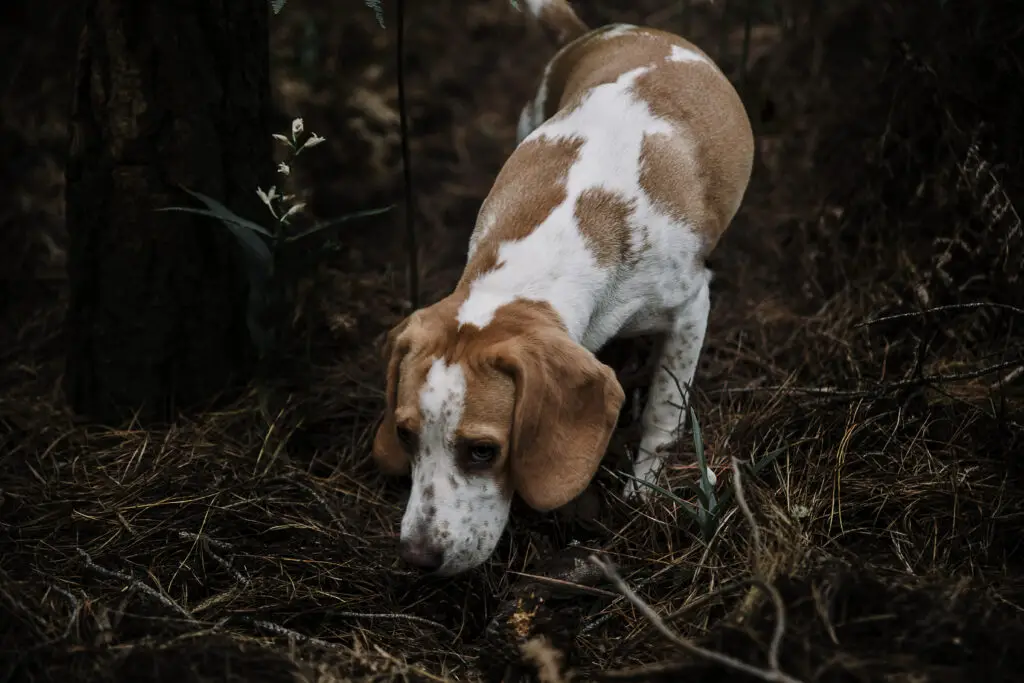Why do dogs roll on dead animals? If you’ve ever owned a dog or spent time with one, you may have come across a peculiar behavior: rolling in dead animals. It’s an instinctive action that can leave you wondering why dogs engage in such behavior.
In this article, we’ll explore the reasons behind this unusual habit and provide you with some tips on how to prevent it. So, let’s dive in!
Why do dogs roll on dead animals?
1. Scent Marking
Dogs have a highly developed sense of smell, and rolling in dead animals is a way for them to mark their territory. By covering themselves with the scent of the deceased, they leave their own mark and communicate their presence to other animals.
2. Camouflage
In the wild, dogs have inherited instincts from their ancestors, such as wolves. Rolling in dead animals helps them camouflage their own scent, making it easier for them to approach prey without being detected.
3. Exploration and Investigation
Dogs are naturally curious creatures. Rolling in dead animals allows them to explore and investigate new scents. It’s their way of gathering information about their surroundings and the wildlife in the area.
4. Instinctive Behavior
Rolling in dead animals can also be a leftover instinct from their wild ancestors. In the wild, predators often roll in strong-smelling substances to mask their own scent and avoid detection by their prey.
5. Social Bonding
Dogs are pack animals and have a strong sense of social bonding. Rolling in dead animals can be a way for them to bring the scent back to their pack and share information about potential food sources or dangers in the environment.
6. Seeking Attention:
Dogs are known for their love of attention. Rolling in something smelly, like a dead animal, can be their way of seeking attention from their owners. They know that such behavior often elicits a strong reaction and prompts interaction.
7. Relief from Itching or Discomfort
Sometimes, dogs may roll in dead animals to alleviate itching or discomfort caused by skin conditions or allergies. They instinctively seek relief and may find the scent or texture of the carcass soothing.
8. Stress Reduction
Rolling in dead animals can provide dogs with a form of stress relief. It may help them cope with anxiety or tension, acting as a natural behavior that helps them relax and feel more secure.
9. Mimicking Predatory Behavior
Rolling in dead animals could be a way for dogs to mimic the behavior of their wild counterparts. By imitating predatory actions, they may feel more connected to their instincts and natural hunting behaviors.
10. Inherited Behavior
Certain breeds of dogs have a stronger prey drive and hunting instinct than others. Rolling in dead animals can be a result of inherited behavior that is deeply ingrained in their genetic makeup.
5 preventing strategies why do dogs roll on dead animals
Now that we understand some of the reasons behind this behavior, let’s explore a few preventive measures to discourage your furry friend from rolling in dead animals:
1. Training and Socialization
Start training your dog from an early age, teaching them basic commands like “leave it” or “drop it.” Proper socialization with other animals can also help minimize the urge to roll in dead animals.
2. Supervision and Leash Control
When walking your dog, keep a close eye on them and use a leash in areas where dead animals may be present. This allows you to have control over their movements and prevents them from engaging in undesirable behavior.
3. Positive Reinforcement
Reward your dog with treats, praise, and affection when they exhibit good behavior, such as ignoring dead animals. Positive reinforcement helps reinforce positive habits and redirects their focus away from rolling in carcasses.
4. Scent Deterrents
Use dog-safe scent deterrents, such as citronella-based sprays or specially formulated repellents, to discourage your dog from approaching dead animals. These deterrents create an unpleasant odor that dogs typically dislike.
5. Proper Waste Disposal
Dispose of dead animals promptly and securely to minimize the chance of your dog encountering them. Secure garbage bins and regular waste removal can help prevent access to tempting sources.
What do you do if your dogs roll on dead animals?
If your dog rolls in a dead animal, it can be quite unpleasant and messy. Here are some bathing techniques you can follow to clean your dog:
1. Prepare the bathing area
Find a suitable place to bathe your dog, such as a bathtub or an outdoor area with access to warm water. Make sure you have all the necessary supplies handy, including dog shampoo, towels, and a brush.
2. Wear protective gear
Since the dead animal may carry bacteria or parasites, it’s advisable to wear gloves while handling your dog and the contaminated areas. This will help prevent any potential transmission of diseases.
3. Remove visible debris
Before bathing, carefully remove any visible debris or foreign objects from your dog’s fur. Be gentle and cautious to avoid pulling on any matted fur or causing discomfort to your dog.
4. Rinse with lukewarm water
Use lukewarm water to wet your dog’s coat thoroughly. Make sure the water temperature is comfortable for your dog. Avoid using hot water as it may irritate their skin.
5. Apply dog shampoo
Once your dog is wet, apply a mild dog shampoo specifically formulated for their coat type. Gently massage the shampoo into their fur, ensuring it reaches the areas that came into contact with the dead animal.
6. Pay attention to sensitive areas
Be extra careful when washing your dog’s face, ears, and any other sensitive areas. Use a washcloth or your hand to clean these areas, being cautious to avoid getting shampoo in their eyes or ears.
7. Rinse thoroughly
Rinse your dog’s coat thoroughly, making sure to remove all traces of shampoo. Leftover shampoo can cause skin irritation and discomfort.
8. Dry your dog
Use towels to gently dry your dog’s fur. You can also use a hairdryer on a low heat setting, keeping it at a safe distance to prevent burning their skin. Avoid using a high heat setting as it can be uncomfortable for your dog.
9. Brush their coat
Once your dog is dry, brush their coat to remove any remaining debris and to help restore their natural shine.
10. Monitor for any signs of illness
Keep an eye on your dog for any signs of illness or discomfort following the incident. If you notice anything unusual, such as excessive scratching, redness, or a change in behavior, consult your veterinarian.
Remember, if you’re unsure about bathing your dog or if they show signs of distress, it’s always a good idea to seek professional help from a groomer or veterinarian.
FAQs – Why do dogs roll on dead animals?
Q1: Is it normal for dogs to roll on dead animals?
Yes, it’s a relatively common behavior exhibited by some dogs. It has roots in their instincts, social behavior, and sensory exploration.
Q2: Can rolling on dead animals be harmful to my dog?
While rolling in dead animals itself may not be harmful, it can expose your dog to potential health risks, such as parasites, bacteria, or toxins associated with decaying animals.
Q3: Are there any health concerns associated with dogs rolling in dead animals?
Yes, rolling in dead animals can pose health risks. It’s advisable to consult your veterinarian if you suspect your dog has come into contact with dead animals, especially if they show signs of illness or discomfort.
Q4: Can I completely eliminate this behavior in my dog?
While it may be challenging to completely eliminate the behavior, you can minimize it through training, prevention strategies, and positive reinforcement.
Q5: Should I punish my dog for rolling in dead animals?
No, punishing your dog may create fear or anxiety. It’s more effective to redirect their attention, reinforce positive behavior, and use preventive measures to discourage the behavior.
Conclusion
The behavior of dogs rolling in dead animals may seem puzzling, but it’s rooted in their instincts, curiosity, and social nature. By understanding the reasons behind this behavior, you can take preventive measures to discourage it and keep your furry friend safe and healthy. Remember, patience, training, and positive reinforcement are key to modifying your dog’s behavior.


